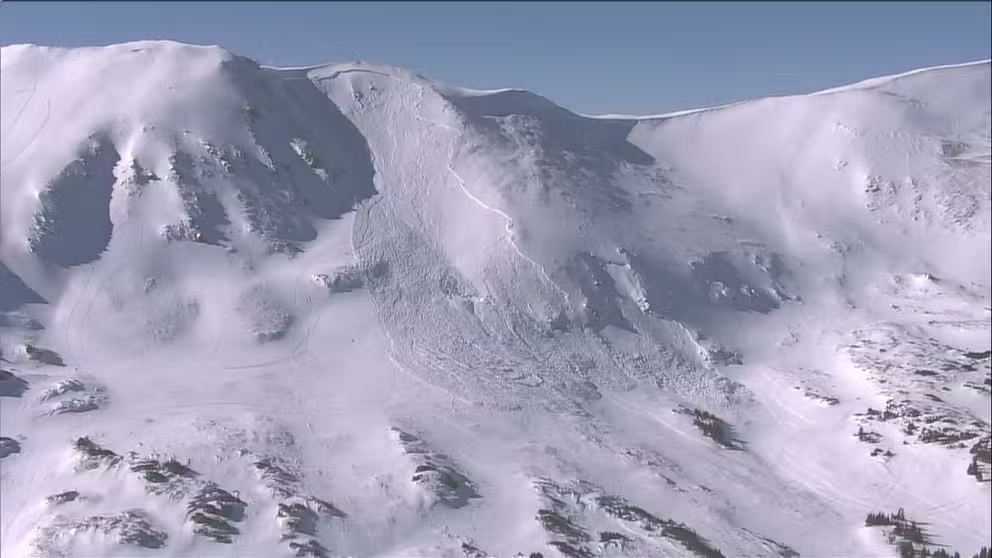How cannons are used to fight avalanches
To help prevent large, destructive avalanches, some are intentionally started as a way to save lives — and they’re started by using weapons of war
Controlling Avalanches
How avalanches are formed, and how humans attempt to control them.
Snow-covered mountains are no strangers to avalanches.
These destructive, rapid flows of snow only need three ingredients to occur: a steep slope, weather that builds up a snowpack and a trigger.
But what if that trigger were intentional?
In a bit of a powdery paradox, in order to help prevent large, deadly avalanches, some are intentionally started as a way to save lives — and they’re started by using weapons of war.
Forecasting avalanches
Controlling Avalanches
How avalanches are formed, and how humans attempt to control them.
"It's hard to prevent the avalanche from happening," said Steven Clark, avalanche program manager for the Utah Department of Transportation.
"But what we try to do as forecasters and people who mitigate avalanches is try to initiate or try to coordinate when those avalanches are going to happen," he added.
DANGERS OF AVALANCHES, AND HOW TO STAY SAFE ON THE SLOPES
According to Clark, avalanches are intentionally triggered when something of importance — a person, roadway, or building — may be in danger of a naturally-occurring avalanche.
One of the ways avalanche forecasters gauge the likelihood of natural avalanches is by watching the weather.
"Because weather modeling has come so far, we usually have up to days notice of when we think that there's going to be some kind of significant weather event that is going to be cause for concern," Clark said.
Then, his team reevaluates what their existing snowpack situation is like. Once the likelihood of an avalanche is clear, preparations are made to trigger a controlled avalanche.
They then use a myriad of tools to trigger the avalanche – and some of those tools go off with a bang.
Avalanche control and mitigation
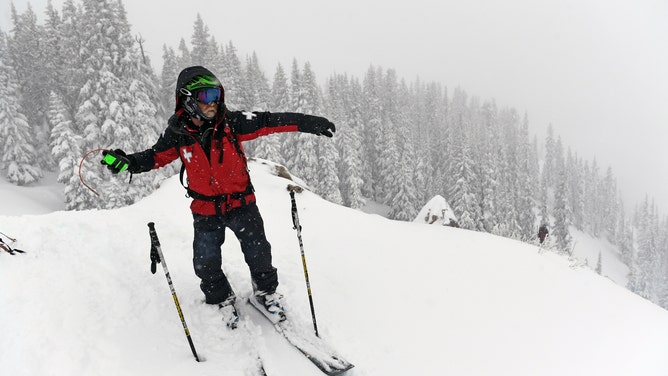
Ski patroller Eric Mercer Baumm throws explosives into deep powder in Crested Butte, Colorado.
(Helen H. Richardson / The Denver Post / Getty Images)
Avalanche mitigation teams use different kinds of tools to do their work.
For example, they may remotely trigger avalanches by using an explosive air blast. Teams may also use hand-thrown explosives on the slopes.
AVALANCHE PREPAREDNESS: WHAT YOU NEED TO KNOW BEFORE YOU HIT THE SLOPES
On the other end of the scale, avalanche mitigators have gone big — really big.
According to Clark, military artillery is used to trigger avalanches, and they have been since the 1950s.
"They figured it out actually in World War II when they were fighting in Italy. They figured out that their artillery was triggering avalanches," he said. "Those people came back, and they decided that that would be a great tool to do avalanche mitigation work here in North America."
Bringing in the big guns
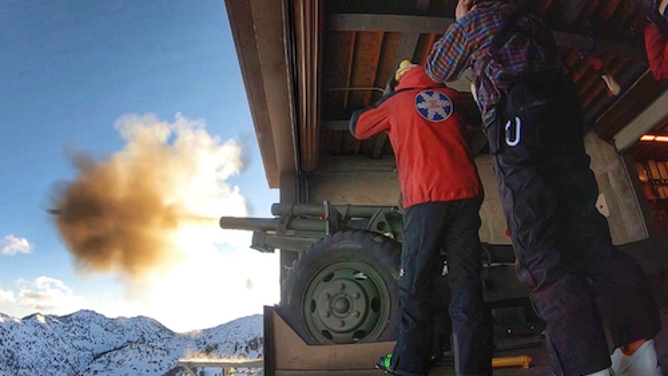
A Howitzer being shot by Alta Ski Patrol, a first aid response and evacuation team in the Alta, Utah.
(Trent Meisenheimer / Central Wasatch Commission, Utah)
"For the past decade or so, everyone in North America has been using the same artillery system, and it's a 105-millimeter howitzer," said Clark.
The howitzer is an artillery gun or cannon. According to Clark, the kind used in avalanche mitigation shoots 35-pound artillery shells that are about three feet long.
He noted that they are military surplus weapons that are leased to his team from the U.S. Army. They are also all brought onto the same page on how to utilize the cannons.
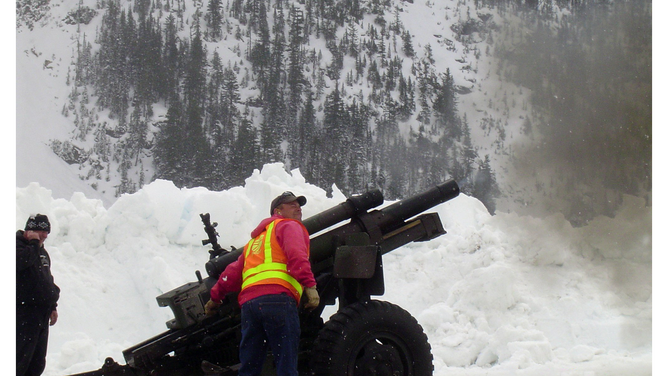
An avalanche control crew fires at the Liberty Bell Mountain avalanche chutes in Washington. May 4, 2010.
(Washington State DOT)
"Everyone is part of this artillery user group committee," Clark said. "Everyone has to follow the same training standards to be able to operate this equipment."
Unlike hand-thrown explosives, the cannons can be used far from an avalanche site. Clark noted that the cannons can cover miles of terrain up to about three miles away.
From that distance, avalanche mitigators can trigger avalanches that can be controlled, thereby preventing them from occurring naturally and potentially being more dangerous to people nearby.
Sonic myths
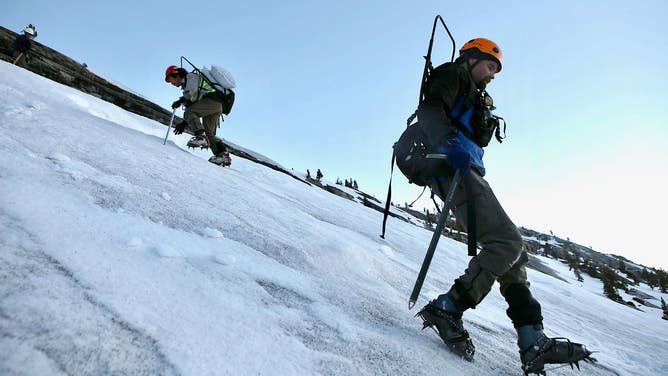
A Yosemite National Park avalanche team plants explosives in a severe avalanche area.
(Brian van der Brug / Los Angeles Times / Getty Images)
With talk of using cannons and explosives, one question does come to mind: Since military artillery is loud, couldn’t the booming sound of blasts trigger other avalanches nearby?
According to Clark, that’s just a myth. Loud noises — from artillery or anything, really — don’t trigger avalanches.
More likely culprits are people and wildlife walking across steep slopes, along with wind and high rates of precipitation.
Avalanche safety
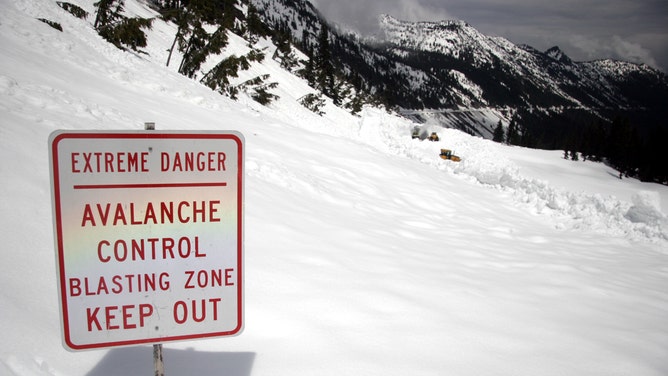
Avalanche work in Washington.
(Washington State DOT)
Although military artillery has been used in avalanche mitigation work for over sixty years, their days are numbered. According to Clark, the goal of UDOT is to eventually stop using artillery altogether.
"We've achieved over 50 percent reduction in our dependence on artillery in the past decade by installing these remote avalanche control systems," he said.
While avalanche forecasters and mitigators are standing guard, Clark stressed the importance of people staying alert and informed about avalanche hazards.
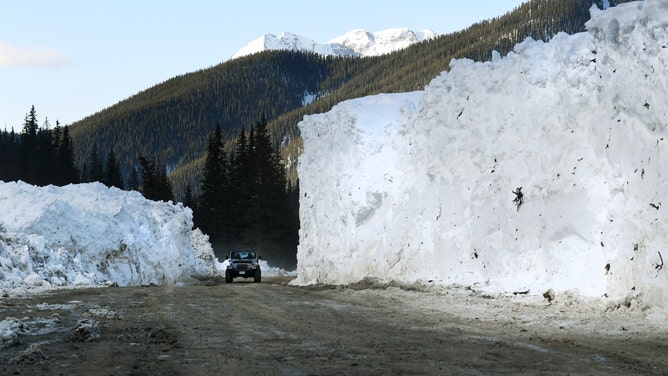
In Colorado, an SUV drives through a pass, flanked by snowbeds created from a recent avalanche.
(RJ Sangosti / MediaNews Group / The Denver Post / Getty Images)
One of those ways is by going to check the avalanche forecast on Avalanche.org.
"Getting that information for where you are, I think it's going to be the biggest help for people," he said.
HOW METEOROLOGISTS IN THE DEADLIEST STATE FOR AVALANCHES KEEP PEOPLE SAFE
Safety is key in areas with some of the country’s most stunning views.
"The mountains are a really beautiful place to spend your time and work in," Clark said. "I think snow and water and ice -- it's one of the more interesting materials on Earth."
